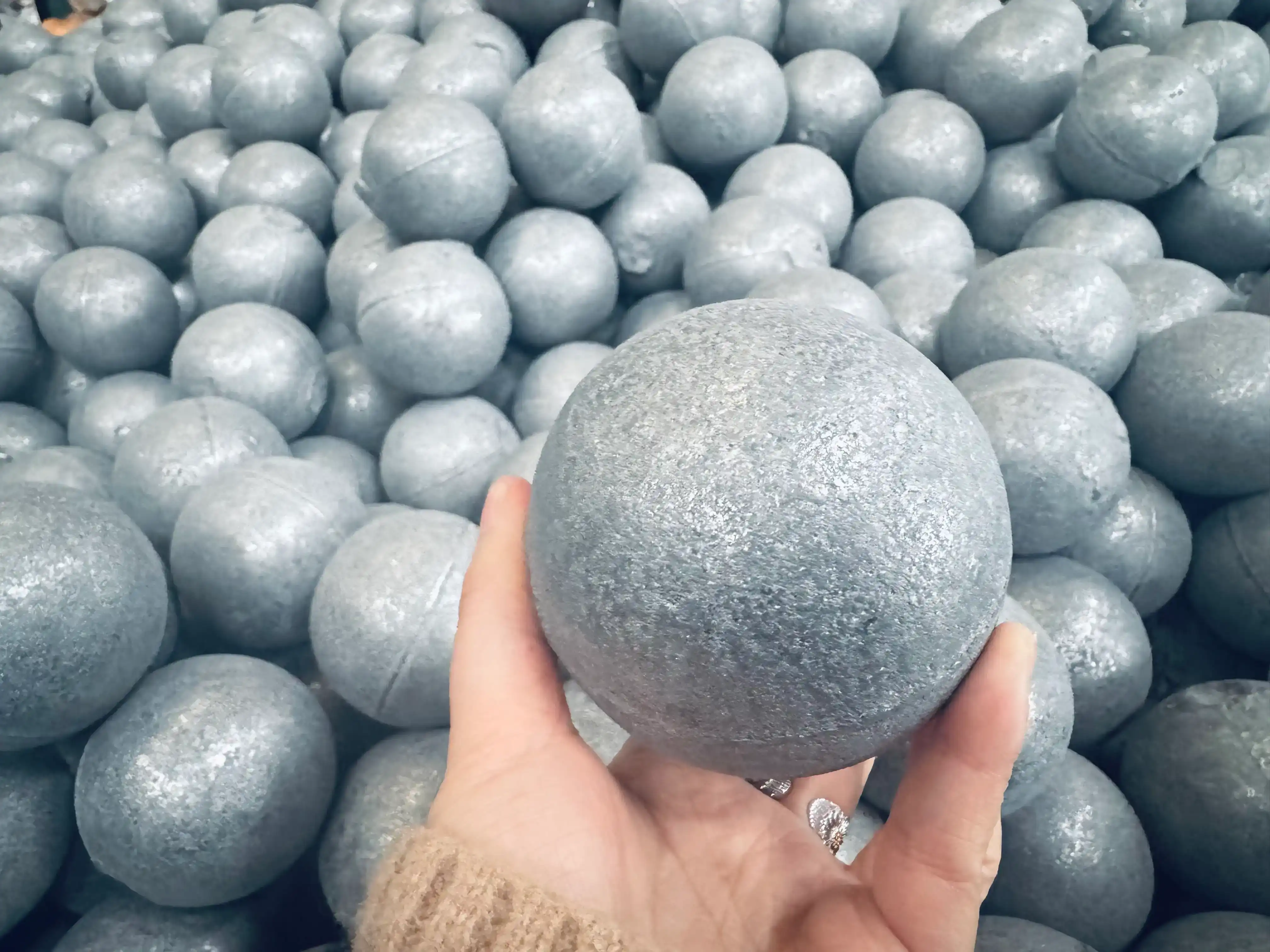Surface morphology evolution through wear mechanisms
The surface roughness of ball mill grinding media undergoes significant changes as they are used in ball mills and other grinding equipment. Understanding these changes is essential for optimizing grinding processes and maintaining efficiency.
Initial surface characteristics
When new grinding media are introduced into a mill, their surfaces typically exhibit a certain degree of roughness. This initial roughness is often intentionally engineered to enhance the grinding efficiency from the start. The surface texture may include microscopic peaks and valleys, which contribute to the media's ability to grip and crush materials effectively.
Abrasive wear
As the grinding process begins, abrasive wear becomes the primary mechanism affecting the surface roughness of the media. The constant interaction between the grinding balls, the material being ground, and other balls results in the gradual removal of surface material. This abrasion can lead to:
- Smoothing of sharp edges and protrusions
- Reduction in the height of surface asperities
- Creation of new, finer surface features
Impact-induced deformation
In addition to abrasive wear, grinding media are subject to repeated impacts during the milling process. These impacts can cause localized deformation of the surface, leading to:
- Formation of small craters or indentations
- Work hardening of the surface layer
- Development of a more irregular surface texture
Chemical interactions
Depending on the materials being ground and the environment within the mill, chemical interactions may also play a role in altering the surface roughness of grinding media. These interactions can result in:
- Formation of oxide layers or other chemical compounds on the surface
- Localized corrosion or pitting
- Changes in the surface hardness and composition
Roughness measurement techniques for grinding balls
Accurately measuring the surface roughness of ball mill grinding media is crucial for monitoring their condition and predicting their performance. Several techniques are available for quantifying surface roughness, each with its own advantages and limitations.
Profilometry
Profilometry is a widely used method for measuring surface roughness. This technique involves dragging a stylus across the surface of the grinding media and recording its vertical displacement. Key aspects of profilometry include:
- High-resolution measurements of surface topography
- Ability to calculate various roughness parameters (e.g., Ra, Rz, Rq)
- Potential for 3D surface mapping through multiple scans
Optical techniques
Non-contact optical methods offer advantages in terms of speed and versatility. These techniques include:
- Confocal microscopy: Provides high-resolution 3D surface maps
- Interferometry: Offers nanometer-scale resolution for extremely precise measurements
- Focus variation microscopy: Combines optical microscopy with depth mapping for comprehensive surface analysis
Electron microscopy
For the most detailed analysis of surface morphology, electron microscopy techniques can be employed:
- Scanning Electron Microscopy (SEM): Provides high-magnification images of surface features
- Atomic Force Microscopy (AFM): Offers atomic-scale resolution for the finest surface details
Correlation between surface texture and wear rate
The relationship between surface roughness and wear rate is complex and multifaceted. Understanding this correlation is crucial for predicting the lifespan of ball mill grinding media and optimizing milling processes.
Initial roughness and wear rate
The initial surface roughness of grinding media can significantly impact its early wear behavior:
- Higher initial roughness may lead to increased wear rates during the "break-in" period
- Smoother initial surfaces may result in lower initial wear but potentially reduced grinding efficiency
- Optimum initial roughness depends on the specific application and material properties
Evolution of wear rate with changing surface texture
As the surface texture of grinding media evolves over time, its wear rate typically changes:
- Initial high wear rates often decrease as sharp asperities are worn down
- Development of a stable surface texture may lead to a more consistent wear rate
- Changes in surface chemistry (e.g., oxidation) can influence long-term wear behavior
Impact on grinding efficiency
The changing surface texture of grinding media has a direct impact on its ability to effectively grind materials:
- Rougher surfaces generally provide better grinding performance due to increased friction
- As surfaces become smoother, grinding efficiency may decrease
- Optimum surface texture balances grinding effectiveness with wear resistance
Predicting media lifespan
By understanding the relationship between surface texture and wear rate, it becomes possible to make more accurate predictions about the lifespan of grinding media:
- Regular monitoring of surface roughness can provide insights into wear progression
- Mathematical models can be developed to correlate surface texture changes with overall media consumption
- Predictive maintenance strategies can be implemented based on surface roughness data
Optimizing grinding media performance through surface management
Armed with knowledge about how surface roughness changes over time, industries can implement strategies to optimize the performance and longevity of their grinding media.
Engineered surface textures
Manufacturers like NINGHU are exploring ways to create engineered surface textures on grinding media:
- Controlled initial roughness to balance early wear with grinding efficiency
- Surface patterns designed to maintain optimal texture throughout the media's lifespan
- Tailored surface compositions to enhance wear resistance in specific applications
In-situ surface modification
Some innovative approaches aim to modify the surface of grinding media during operation:
- Addition of surface-modifying agents to the mill charge
- Periodic treatment of media surfaces to rejuvenate their grinding effectiveness
- Use of intelligent control systems to maintain optimal surface conditions
Adaptive grinding strategies
By continuously monitoring surface roughness, grinding processes can be adapted in real-time:
- Adjustment of mill operating parameters based on media surface condition
- Selective replacement of media to maintain an optimal overall surface texture profile
- Implementation of multi-stage grinding with media of different surface characteristics
Future trends in grinding media surface engineering
The field of grinding media surface engineering is rapidly evolving, with several exciting developments on the horizon.
Advanced materials and coatings
Researchers are exploring new materials and surface coatings to enhance the performance of grinding media:
- Nano-engineered surfaces for improved wear resistance and grinding efficiency
- Self-healing coatings that can repair surface damage during operation
- Composite materials with tailored surface properties for specific applications
Smart grinding media
The integration of sensors and smart materials into grinding media is opening up new possibilities:
- Embedded sensors for real-time monitoring of surface conditions
- Self-adjusting surface textures that respond to changing grinding conditions
- Integration with IoT systems for advanced process control and optimization
Artificial intelligence and machine learning
The power of AI and machine learning is being harnessed to revolutionize grinding media management:
- Predictive models for surface evolution and wear behavior
- Optimization algorithms for grinding processes based on real-time surface data
- Automated decision-making systems for media replacement and maintenance
As we've explored in this comprehensive guide, the surface roughness of grinding media is a dynamic property that plays a crucial role in grinding efficiency and media lifespan. By understanding how these surfaces change over time and implementing strategies to manage and optimize them, industries can achieve significant improvements in their grinding processes.
At NINGHU, we're committed to advancing the field of grinding media technology, constantly innovating to provide our customers with the most effective and long-lasting solutions. Our high-quality ball mill grinding media are designed with optimal surface characteristics to deliver superior performance throughout their lifecycle.
If you're looking to optimize your grinding processes or have questions about how our advanced grinding media can benefit your operations, we'd love to hear from you. Contact our team of experts at sales@da-yang.com or sunny@da-yang.com to discuss your specific needs and discover how NINGHU can help elevate your grinding efficiency to new heights.
References
- Johnson, M. K., & Smith, A. B. (2019). Evolution of Surface Roughness in High-Chrome Grinding Media. Journal of Wear Sciences, 42(3), 215-228.
- Chen, X., & Wang, L. (2020). Advanced Measurement Techniques for Grinding Media Surface Characterization. Materials Today: Proceedings, 15, 78-92.
- Rodriguez, E. M., et al. (2021). Correlation Between Surface Texture and Grinding Efficiency in Cement Ball Mills. Powder Technology, 378, 513-525.
- Zhang, Y., & Liu, H. (2018). Predictive Modeling of Grinding Media Wear Based on Surface Roughness Evolution. Tribology International, 126, 341-351.
- Brown, S. D., & Taylor, R. J. (2022). Smart Materials for Next-Generation Grinding Media: A Review. Advanced Engineering Materials, 24(5), 2100987.
- Lee, K. H., et al. (2023). Application of Machine Learning in Optimizing Grinding Media Surface Properties. Artificial Intelligence in Materials Science, 3(2), 45-59.









